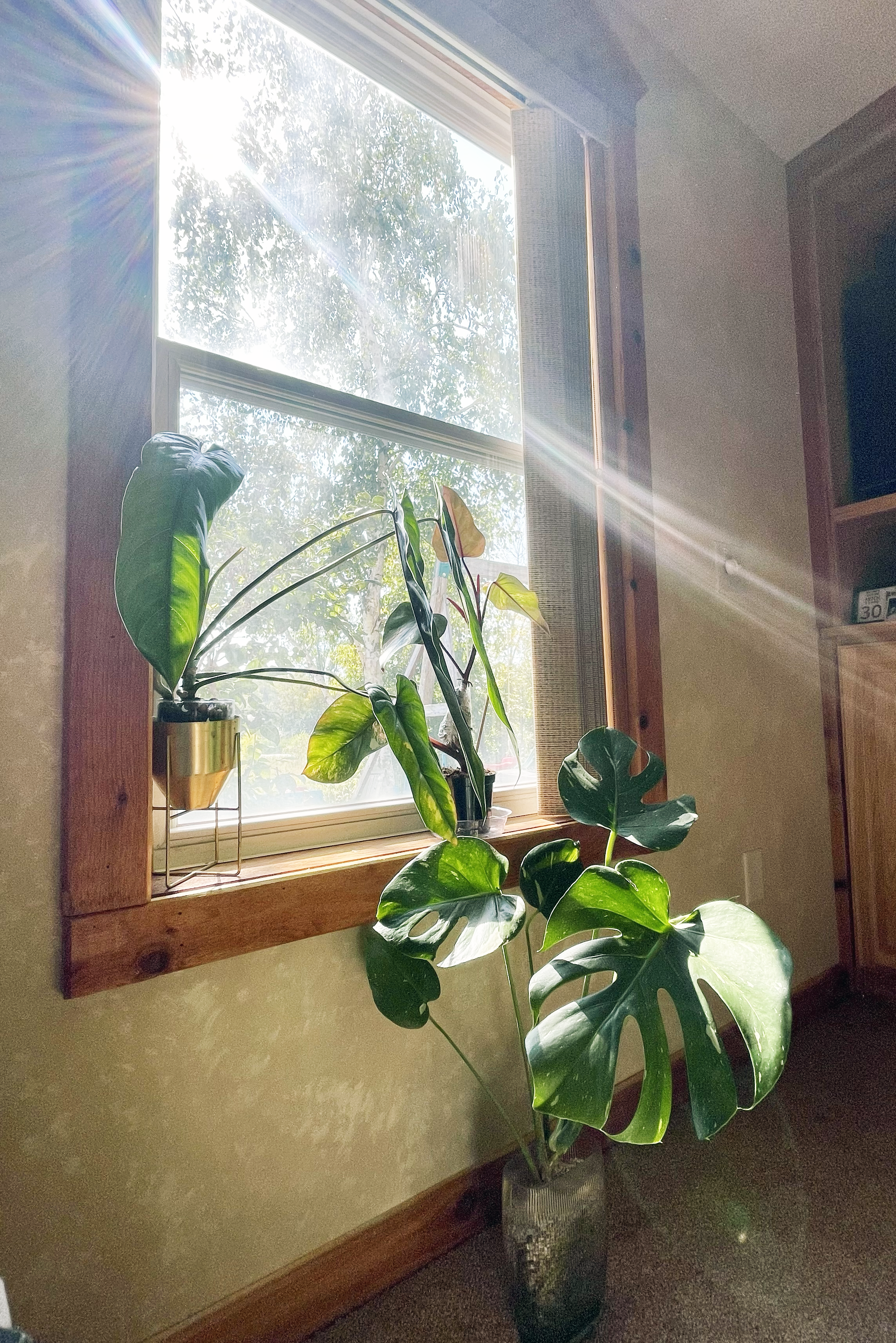
I think we have all heard plant comments or recommendations on the best lighting for some plants but what does that even mean when it comes to natural light at your own home? It is one of the most important parts of taking care of houseplants yet can still be a mystery on how brightness and window direction can affect them. Let's understand the natural light you already have to set you up for a successful plant journey.
Understanding the Difference in Lighting
-

Source: bethewild.com
It's important to note that light conditions will vary depending on the time of year and where you are located in the world. Don't be afraid to reposition plants when they need it (but note that some plants like the Aloe Vera need to gradually be acclimated to new light conditions).
- Direct Sunlight: Imagine your plants as sun-worshipping beachgoers, complete with tiny sunglasses. This light enters through an unobstructed window throughout most of the day. They crave those golden rays, but not all of them can handle the full tropical sun experience. Succulents and cacti are your sunbathers, thriving in those south-facing windows where the sun plays MVP.
- Bright Indirect Light: Now, think of these plants as the folks who prefer a cozy cafe with dappled sunlight. They enjoy the spotlight, but not the scorching heat. Many tropical houseplants, like Monsteras and Philodendron, fall into this category. Place them a few feet from your east or west-facing windows, and they'll flourish. If you can't remember what kind of light your plant needs..opt for bright and indirect!
- Medium Light: Medium light is like a well-balanced diet for your plants. Not too much, not too little - just right. Most common houseplants, from Peace Lilies to Spider Plants, are content here. They're the Goldilocks of the plant world, thriving in a variety of window placements.
- Low Light: Think of these plants as introverts. They don't mind being in the shadows. Zz plants and Sansevieria plants are the poster children for low-light lovers. Place them near north-facing windows or in corners with minimal natural light, and they'll flourish, quietly.
Tip: If you can comfortably read a book in a room with no additional light for 4-6 hours of the day, you have bright indirect light.
Identifying How Much Light Your Home Has
-

The first steps is finding out how much natural light your home gets. To do this you need to see where your windows point. The amount of light that enters a window depends on which point on the compass it faces.
Use the compass app on your phone and walk around to your windows to see where they face. This is an important piece to the puzzle. You also need to take into consideration the time of year and what direction the sun rises and sets where you are located.
Here is a breakdown of the type of light your plants will get in the northern hemisphere depending on the window you place them by. If you live in the southern hemisphere these directions will be reversed.
- North-Facing Windows - These windows offer low to medium light. Ideal for shade-loving plants like snake plants and ZZ plants. It's like the cozy corner of a library where introverts thrive.
- East-Facing Windows - Morning sunshine pours in, providing bright indirect light. Perfect for your coffee-drinking, brunch-loving plants like your ferns and calatheas.
- West-Facing Window - These windows get the afternoon sun, offering bright indirect light. It's like the perfect balance between a morning yoga session and an afternoon nap.
- South-Facing Windows - Hello, sunshine! These windows are the MVPs for your sun-loving succulents, cacti, and tropical beauties. It's like a day at the beach, but for your plants.
Note: While the above gives a good idea of lighting, not everyone receives the same light. Observe how the sun moves around your place then experiment with your plant's placement.
Other Considerations
-

So now that you have figured out what kind of light your windows have, let's get into some other things you should take into consideration.
Obstructions: It is a rarity to have natural light from a window with zero obstruction. Things we don't notice on the day to day like tree shadows, fences, neighboring houses can cause lighting obstruction. Obstructions are anything that blocks the light you could be receiving. These aren't necessarily bad things, but it's important to take note of them so you can provide your plants the light they need to thrive.
Window Size: The size of your window determines how much light can get in. If you have a small window you won't be receiving as much light as say a floor-length window. It's kind of self-explanatory, but it's an important factor when placing your plants. If you have a smaller window, when the sun moves around throughout the day your plants will get "cut off" from the light.
Grow Lights: If you aren't receiving the light you need, then invest in some grow lights! This goes especially for us folks in the northern states that get what feels like 30min of light a day during the winter. These lights have helped a lot especially on cloudy days, but aren't necessary if you are getting enough light!
Remember, understanding natural light is like learning a language. It's about finding that sweet spot where they can thrive and you are able to learn through experience. 🌿✨
XOXO,
LITF







